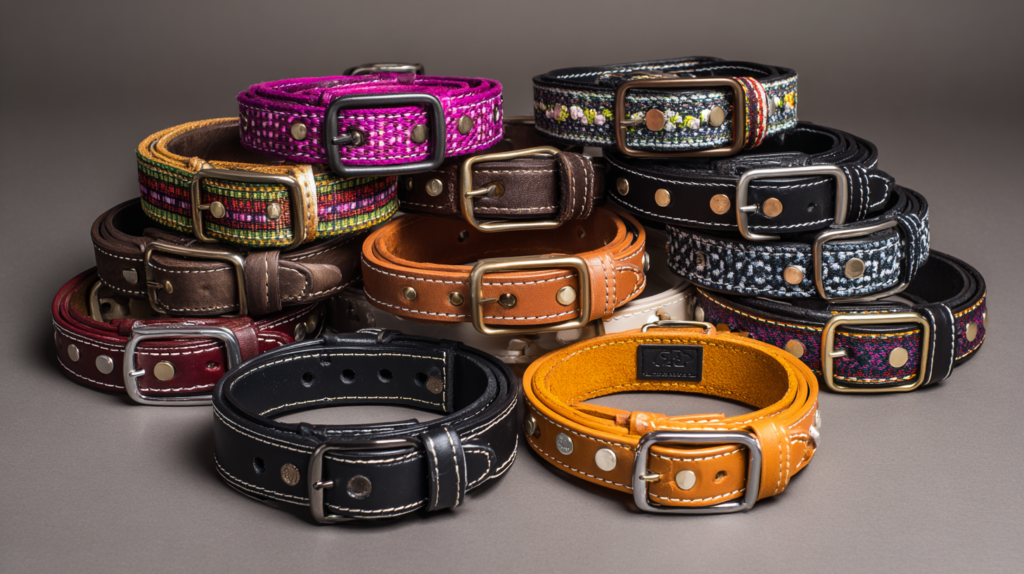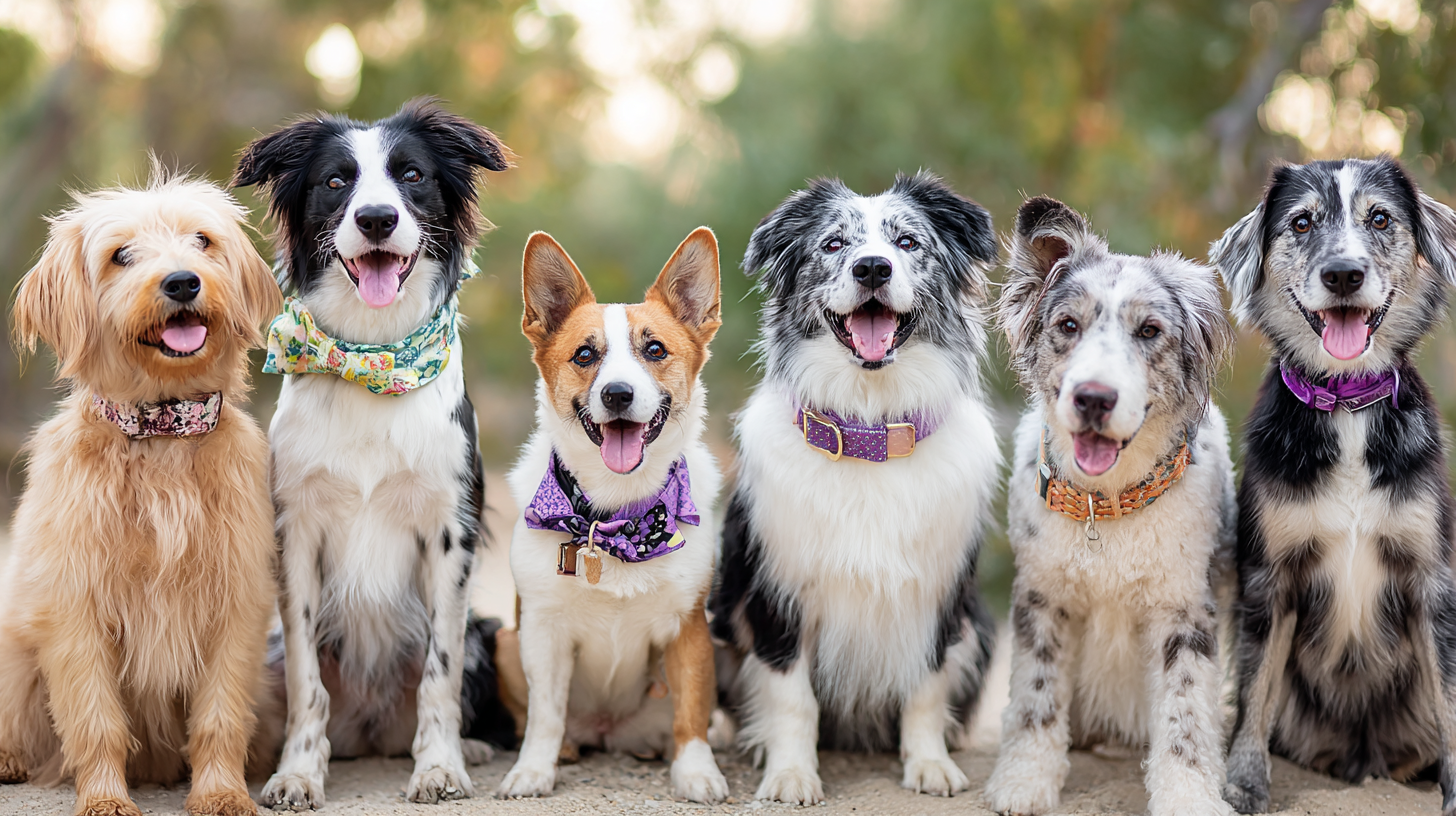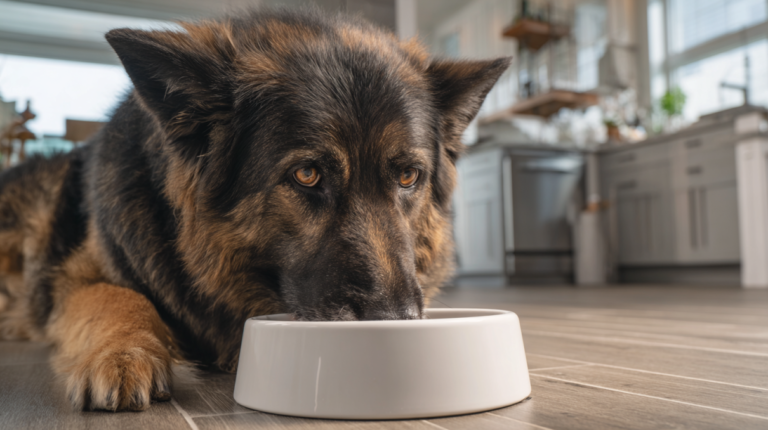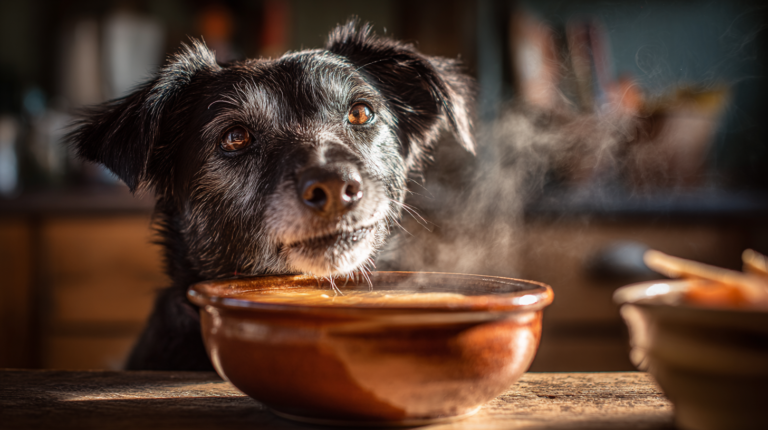Discover the best dog and collars for your pup! Expert guide to 10 stylish, safe collar options plus sizing tips and safety advice from veterinary professionals.
Table of Contents
Did you know that 85% of dog owners consider their pet’s collar the most important safety accessory they’ll ever purchase? Yet many pet parents struggle with finding the perfect balance between style, comfort, and functionality when selecting dog and collars for their beloved companions. Whether you’re a first-time dog owner or looking to upgrade your furry friend’s current collar, choosing the right one involves more than just picking a pretty design.
Dog and collars serve multiple critical functions beyond simple identification. They provide a secure attachment point for leashes during walks, display important ID tags, and can even help with training and behavior management. The right collar can enhance your dog’s comfort during daily activities while reflecting their unique personality and your personal style preferences.
In this comprehensive guide, we’ll explore ten stylish collar options that veterinary professionals recommend, diving deep into safety considerations, sizing guidelines, and expert tips that will help you make the best choice for your four-legged family member. From classic leather designs to modern smart collars, we’ll cover everything you need to know about dog and collars to keep your pup safe, comfortable, and looking fantastic.
Understanding Different Types of Dog Collars

Flat Collars: The Classic Choice
Flat collars represent the most traditional and widely used type of dog and collars available today. These simple, adjustable bands typically feature a buckle or quick-release closure and provide an ideal foundation for most dogs’ collar needs. Made from materials ranging from nylon and leather to fabric and synthetic blends, flat collars offer versatility that works for both everyday wear and special occasions.
Veterinary behaviorists particularly recommend flat collars for well-trained dogs who walk calmly on leash. The even distribution of pressure around the neck makes them comfortable for extended wear, and their simplicity means fewer mechanical parts that could potentially fail or cause injury. When selecting flat collars, look for adjustable sizing that allows for growth and seasonal coat changes.
Martingale Collars: Gentle Control for Sensitive Dogs
Martingale collars, also known as limited-slip collars, provide a humane alternative to traditional choke chains while offering better control than standard flat collars. These dog and collars feature a unique design that tightens slightly when your dog pulls, preventing them from backing out of the collar without causing choking or injury.
Originally developed for sighthounds like greyhounds and whippets, whose narrow heads make escape from regular collars easy, martingale collars have gained popularity among owners of various breeds. The gentle tightening action provides feedback to dogs who pull, making them excellent training tools when used correctly. However, martingale collars should never be left on unsupervised dogs, as the loose loop could potentially catch on objects.
Harness-Style Collars: Maximum Comfort and Control
While technically not traditional collars, harness-style options deserve mention in any comprehensive discussion of dog and collars. These systems distribute pressure across the chest rather than concentrating it around the neck, making them ideal for dogs with respiratory issues, tracheal problems, or those prone to pulling.
Front-clip harnesses redirect pulling dogs toward the handler, naturally discouraging the behavior without causing discomfort. Back-clip versions work well for calm walkers and provide comfortable all-day wear. Many modern harnesses incorporate stylish designs and colors that rival traditional collars in aesthetic appeal.
10 Stylish and Safe Collar Recommendations
1. Premium Leather Collar with Brass Hardware
Classic leather collars never go out of style and improve with age, developing a beautiful patina that reflects your dog’s adventures. High-quality leather dog and collars feature sturdy brass hardware that resists corrosion and maintains its appearance over time. Look for full-grain leather rather than bonded or split leather for maximum durability.
The natural flexibility of leather makes these collars comfortable for daily wear, while the timeless aesthetic works equally well for casual walks and formal occasions. Many leather collars can be personalized with engraving or stamping, adding a custom touch that makes them truly unique to your pet.
2. Waterproof Biothane Collar for Active Dogs
Biothane material offers the appearance of leather with superior water resistance and easy maintenance. These synthetic dog and collars resist odors, dirt, and moisture while maintaining their appearance through countless adventures. The smooth surface wipes clean easily, making them perfect for dogs who love swimming, hiking, or playing in muddy conditions.
Available in numerous colors and widths, biothane collars provide style options that complement any dog’s personality. The material’s flexibility ensures comfort, while its strength rivals traditional leather without the maintenance requirements.
3. Reflective Safety Collar for Evening Adventures
Safety should never be compromised for style, and reflective dog and collars prove you can have both. These collars incorporate reflective strips or threads that dramatically increase visibility during early morning or evening walks. Some models feature LED lights or rechargeable illumination systems for maximum safety.
The reflective elements integrate seamlessly into attractive designs, ensuring your dog looks great while staying safe. Many reflective collars also feature bright base colors that enhance daytime visibility, providing round-the-clock safety benefits.
4. Personalized Embroidered Collar
Custom embroidered dog and collars eliminate the need for separate ID tags while creating a sophisticated, personalized look. High-quality embroidery techniques ensure that your dog’s name and your contact information remain legible through years of wear and washing.
These collars typically feature durable nylon or polyester webbing with colorfast threads that resist fading. The embedded identification provides peace of mind, as there are no tags to fall off or become illegible over time.
5. Eco-Friendly Hemp Collar
Environmentally conscious pet owners appreciate hemp dog and collars for their sustainability and natural properties. Hemp fibers naturally resist mold, mildew, and UV damage while becoming softer with each wash. These collars offer excellent durability while maintaining a reduced environmental footprint.
Available in natural colors and earth tones, hemp collars appeal to owners who prefer organic, chemical-free products for their pets. The material’s natural antimicrobial properties help resist odor buildup, keeping your dog fresh between baths.
6. Quick-Release Breakaway Collar
Safety-conscious owners often choose breakaway dog and collars that release under pressure, preventing choking or injury if the collar becomes caught. These collars feature specially designed buckles that open when excessive force is applied, allowing dogs to escape dangerous situations.
While breakaway collars provide important safety benefits, they require careful consideration of your dog’s behavior and environment. Dogs who frequently lose collars or those in secure environments benefit most from this safety feature.
7. Adjustable Puppy Growth Collar
Growing puppies require dog and collars that adapt to their changing size, and adjustable growth collars provide extended usability through the puppy months. These collars feature extended adjustment ranges and sometimes include additional holes or sizing options.
Soft materials and rounded edges ensure comfort for delicate puppy skin, while durable construction withstands the extra wear that comes with teething and play. Many puppy collars feature cheerful colors and patterns that celebrate the joy of puppyhood.
8. Decorative Studded Collar
For dogs with bold personalities, studded dog and collars provide an edgy aesthetic that commands attention. Modern studded collars incorporate rounded studs or decorative elements that add visual interest without compromising comfort or safety.
High-quality studded collars feature secure attachment methods that prevent hardware from becoming loose or sharp. The base materials typically include leather or heavy-duty nylon that provides the strength needed to support decorative elements safely.
9. Smart Technology Collar
Modern technology has revolutionized dog and collars with GPS tracking, activity monitoring, and smartphone connectivity. These high-tech collars provide real-time location tracking, fitness monitoring, and sometimes even health alerts based on your dog’s activity patterns.
While more expensive than traditional collars, smart collars offer peace of mind for owners of escape-prone dogs or those who want detailed insights into their pet’s daily activities. Battery life and connectivity options vary significantly between models, so research thoroughly before purchasing.
10. Vintage-Style Rolled Leather Collar
Rolled leather collars offer a classic, refined appearance that works beautifully on long-haired breeds where flat collars might cause matting. The rounded design reduces hair breakage and provides comfort for dogs with sensitive skin or thick coats.
These dog and collars require quality leather and expert craftsmanship to maintain their shape and appearance over time. The investment in a well-made rolled collar pays dividends in durability and timeless style that never goes out of fashion.
Proper Collar Sizing and Fit Guidelines
Measuring Your Dog’s Neck
Accurate measurement is crucial when selecting dog and collars, as improper fit can cause discomfort, injury, or escape. Use a flexible measuring tape to measure around your dog’s neck where the collar will sit, typically at the base of the neck just above the shoulders.
For accurate measurements, ensure your dog is standing naturally and relaxed. Wrap the measuring tape snugly but not tightly around the neck, allowing enough space to slide two fingers between the tape and your dog’s skin. Record this measurement and add 2-3 inches for the collar size.
The Two-Finger Rule
Professional dog trainers and veterinarians recommend the two-finger rule for proper collar fit. When the collar is fastened, you should be able to comfortably slide two fingers between the collar and your dog’s neck. This spacing ensures adequate comfort while preventing the collar from being too loose.
Collars that are too tight can cause breathing difficulties, skin irritation, or injury, while those that are too loose may slip off or allow your dog to back out during walks. Regular fit checks are essential, especially for growing puppies or dogs who gain or lose weight seasonally.
Adjusting for Different Activities
Different activities may require slight adjustments to your dog’s collar fit. During training sessions or in crowded areas, a slightly snugger fit provides better control and security. For casual home wear or sleeping, a looser fit increases comfort.
Some owners prefer to remove dog and collars entirely during unsupervised periods, particularly for dogs who spend time in crates or interact with other pets. This practice prevents accidents while maintaining the collar’s condition and your dog’s comfort.
Safety Considerations for Dog Collars
Avoiding Common Hazards
Several safety hazards can arise from improperly selected or fitted dog and collars. Collars that are too tight can cause tracheal damage, skin irritation, or choking, while those that are too loose may slip off or catch on objects. Regular inspection of your dog’s collar helps identify wear patterns, loose hardware, or other potential problems.
Sharp edges, exposed metal, or worn areas can injure your dog’s skin or catch on surrounding objects. Replace collars that show signs of significant wear, particularly if stitching is coming loose or hardware is becoming sharp or damaged.
When to Remove Collars
Veterinary experts recommend removing dog and collars during certain situations to prevent injury. Dogs who are crated, playing with other pets, or left unsupervised for extended periods may be safer without collars. The risk of collars becoming caught on crate bars, other dogs’ mouths, or household objects can lead to serious injury or death.
Some dogs develop hair loss or skin irritation from constant collar wear, particularly those with sensitive skin or thick coats. Regular collar-free periods allow the skin to breathe and can prevent these issues from developing.
Emergency Situations
In emergency situations, properly fitted dog and collars can be lifesaving by providing a secure attachment point for leashes or restraints. However, collars should never be used to lift or carry dogs, as this can cause serious neck or spinal injuries.
Emergency collar removal techniques are important for all dog owners to understand. Quick-release buckles and breakaway features can be vital in situations where the collar becomes caught or causes breathing difficulties.
Training and Behavioral Benefits
Positive Associations
Creating positive associations with dog and collars helps ensure your pet’s comfort and cooperation during wearing and handling. Introduce new collars gradually, allowing your dog to sniff and investigate before putting them on. Reward calm behavior with treats and praise to build positive connections.
For puppies, collar introduction should begin early but gradually. Start with very short wearing periods and gradually increase duration as your puppy becomes comfortable. This process helps prevent collar-related anxiety and ensures easy handling throughout your dog’s life.
Leash Training Integration
Proper collar selection significantly impacts leash training success. Well-fitted dog and collars provide clear communication between handler and dog without causing discomfort or confusion. Collars that are too loose or too tight can interfere with training signals and slow progress.
Consistent collar use during training sessions helps dogs understand when training is about to begin and when they should be attentive to commands. This environmental cue can accelerate learning and improve response times during training activities.
Maintenance and Care Tips
Cleaning Different Materials
Different collar materials require specific care approaches to maintain appearance and functionality. Leather dog and collars benefit from occasional conditioning with appropriate leather care products to prevent cracking and maintain flexibility. Avoid harsh chemicals or excessive moisture that could damage the leather.
Nylon and synthetic collars typically tolerate machine washing, but check manufacturer instructions before proceeding. Use mild detergents and avoid fabric softeners that could reduce the material’s strength or alter its texture.
Storage and Longevity
Proper storage extends the life of dog and collars when they’re not in use. Store collars in dry, well-ventilated areas away from direct sunlight, which can fade colors and weaken materials over time. Avoid storing collars in damp areas where mold or mildew could develop.
Regular inspection and maintenance help identify potential problems before they become serious. Check stitching, hardware, and overall condition regularly, particularly after activities that might stress the collar’s components.
For more expert pet care tips and product recommendations, visit BlithePet.com your trusted source for pet wellness.
Common Mistakes to Avoid
Sizing Errors
One of the most common mistakes owners make with dog and collars involves improper sizing. Buying collars that are too large “for growth” can create safety hazards, while choosing sizes that are too small causes discomfort and potential injury. Always measure your dog’s current neck size and select collars accordingly.
Assuming that collar size corresponds to dog size is another frequent error. Neck circumference varies significantly between breeds and individual dogs, making measurement essential for proper fit. A Great Dane puppy might need a smaller collar than an adult Bulldog, despite the size difference.
Material Misconceptions
Many owners believe that certain materials are inherently better than others without considering their dog’s specific needs. While leather is often considered premium, it may not be the best choice for water-loving dogs or those with leather allergies. Similarly, synthetic materials aren’t necessarily inferior and may offer advantages in certain situations.
Weather resistance, maintenance requirements, and your dog’s activities should all influence material selection. A hiking dog might benefit more from a waterproof synthetic collar than a expensive leather one that requires careful maintenance.
Ignoring Behavioral Factors
Selecting dog and collars without considering your dog’s behavior and personality often leads to poor choices. Anxious dogs might benefit from calming colors or softer materials, while high-energy dogs need durable construction that can withstand their activity levels.
Dogs with specific behavioral issues, such as excessive pulling or escape attempts, require specialized collar types that address these problems. Ignoring these factors can lead to ineffective training and potential safety issues.
When to Consult Your Veterinarian
Skin and Coat Issues
If your dog develops skin irritation, hair loss, or other coat problems around the collar area, consult your veterinarian promptly. These issues could indicate allergic reactions, improper fit, or underlying health conditions that require professional attention.
Persistent scratching, redness, or odor around the collar area may signal infections or other serious conditions. Early veterinary intervention can prevent minor issues from becoming major health problems.
Breathing or Swallowing Difficulties
Any signs of breathing difficulty, coughing, or swallowing problems in dogs wearing collars require immediate veterinary attention. These symptoms could indicate collar-related injury or other serious health issues that need professional evaluation.
Changes in your dog’s bark, eating habits, or energy levels might also relate to collar problems. When in doubt, err on the side of caution and seek professional advice.
Behavioral Changes
Sudden behavioral changes, such as reluctance to have the collar put on or removed, head shaking, or pawing at the collar area, may indicate discomfort or injury. These behavioral signals often appear before physical symptoms and shouldn’t be ignored.
Professional evaluation can help determine whether behavioral changes relate to collar fit, material reactions, or other underlying issues that require attention.
Myth-Busting: Common Collar Misconceptions
Myth 1: Expensive Collars Are Always Better
While quality often correlates with price, the most expensive dog and collars aren’t necessarily the best choice for every dog. Factors like your dog’s size, activity level, and specific needs should drive selection decisions rather than price alone.
A moderately priced collar that fits properly and suits your dog’s lifestyle will always outperform an expensive collar that’s poorly fitted or inappropriate for your dog’s needs. Focus on features and suitability rather than price when making decisions.
Myth 2: Puppies Don’t Need Quality Collars
Some owners believe that puppies will quickly outgrow collars, making quality less important. However, puppies are actually more vulnerable to collar-related injuries and require careful attention to fit and materials.
Quality adjustable collars can grow with puppies and provide better value over time than repeatedly purchasing cheap collars. The safety and comfort benefits of quality collars are especially important during the critical puppy development period.
Myth 3: All Dogs Need the Same Type of Collar
Individual dogs have unique needs based on their breed, size, temperament, and lifestyle. What works perfectly for one dog may be completely inappropriate for another, even within the same household.
Consider each dog’s specific requirements when selecting dog and collars rather than applying one-size-fits-all solutions. This individualized approach ensures optimal comfort, safety, and effectiveness for each pet.
Educational Table:
Markdown Version:
| Collar Type | Best For | Price Range | Durability | Weather Resistance | Maintenance Level |
|---|---|---|---|---|---|
| Flat Leather | Well-trained dogs, formal occasions | $15-$80 | High | Low | High |
| Biothane | Active dogs, outdoor adventures | $20-$60 | Very High | Excellent | Low |
| Reflective Safety | Evening/early morning walkers | $12-$40 | Medium | Good | Low |
| Embroidered | Dogs needing permanent ID | $18-$50 | Medium | Good | Medium |
| Hemp | Eco-conscious owners | $15-$35 | High | Good | Medium |
| Breakaway | Unsupervised dogs, safety-conscious | $10-$30 | Medium | Good | Low |
| Puppy Growth | Growing puppies | $8-$25 | Medium | Good | Low |
| Studded | Bold personality dogs | $20-$70 | High | Good | Medium |
| Smart Technology | Tech-savvy owners, escape-prone dogs | $50-$200 | Medium | Good | Low |
| Rolled Leather | Long-haired breeds, sensitive skin | $25-$90 | High | Low | High |
FAQ Section :
Q: How often should I replace my dog’s collar?
A: Replace dog and collars every 6-12 months or when you notice signs of wear such as fraying, cracking, or loose hardware. Active dogs may need more frequent replacements, while indoor dogs might extend this timeline.
Q: Can my dog wear a collar 24/7?
A: While many dogs can safely wear collars continuously, remove them during unsupervised periods, crate time, or when playing with other dogs to prevent accidents. Give your dog collar-free time daily to prevent skin irritation.
Q: What’s the difference between a collar and a harness?
A: Dog and collars go around the neck and work well for trained dogs, while harnesses distribute pressure across the chest. Harnesses are better for dogs with breathing issues or those who pull, while collars are ideal for well-behaved walkers.
Q: How do I know if my dog’s collar is too tight?
A: Use the two-finger rule: you should be able to comfortably fit two fingers between the collar and your dog’s neck. Signs of a too-tight collar include difficulty breathing, coughing, or red marks on the skin.
Q: Are breakaway collars safe for all dogs?
A: Breakaway collars are excellent for unsupervised dogs but may not be suitable for leash walking or dogs that frequently lose collars. They’re designed for safety during unsupervised periods rather than active control.
Q: What collar material is best for dogs with sensitive skin?
A: Soft materials like padded nylon, hemp, or well-conditioned leather work best for sensitive dogs. Avoid rough textures, cheap metals, or synthetic materials that might cause allergic reactions.
Q: Should puppies wear different collars than adult dogs?
A: Yes, puppies need lightweight, adjustable collars made from soft materials. Choose dog and collars specifically designed for puppies with extended adjustment ranges to accommodate rapid growth.
Conclusion
Selecting the perfect dog and collars for your furry companion involves balancing style, safety, and functionality to meet your pet’s unique needs. From classic leather designs that age beautifully to high-tech smart collars that provide GPS tracking, the right choice depends on your dog’s size, activity level, and your lifestyle preferences.
Remember that proper fit is paramount – use the two-finger rule and measure your dog’s neck accurately to ensure comfort and safety. Regular inspection and maintenance will extend your collar’s life while keeping your pet safe and comfortable.
Whether you choose a waterproof biothane collar for your adventure-loving pup or a sophisticated leather option for special occasions, prioritize quality construction and appropriate materials. Your dog’s collar is more than just an accessory – it’s an essential safety tool that should reflect the care and love you have for your four-legged family member.
The world of dog and collars continues to evolve with new materials, technologies, and design innovations that enhance both safety and style. Stay informed about new developments while maintaining focus on your dog’s individual needs and comfort.
Have a similar experience with your pet? Share it in the comments below! Don’t forget to check out our other helpful guides at BlithePet.com for more expert pet care advice and product recommendations.







